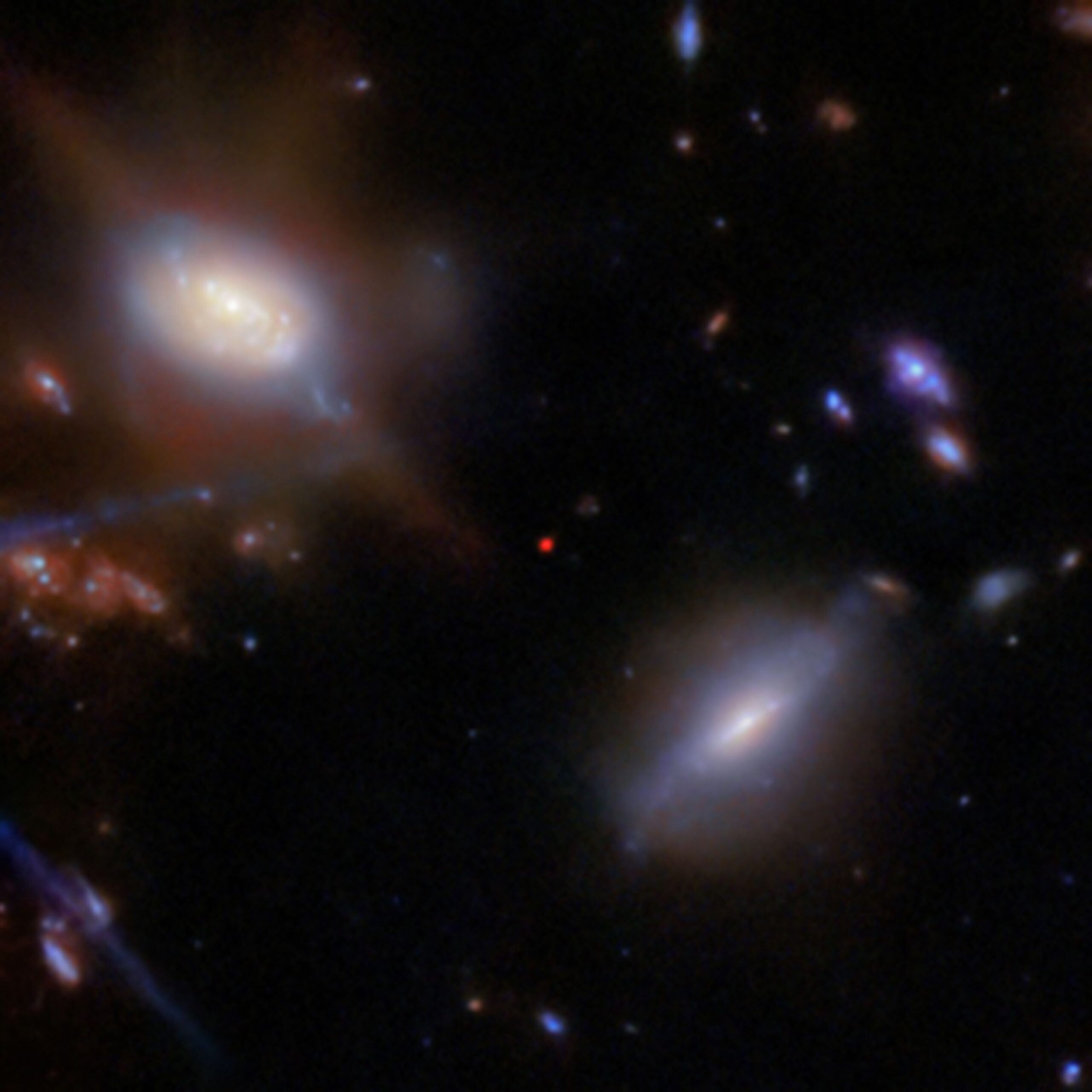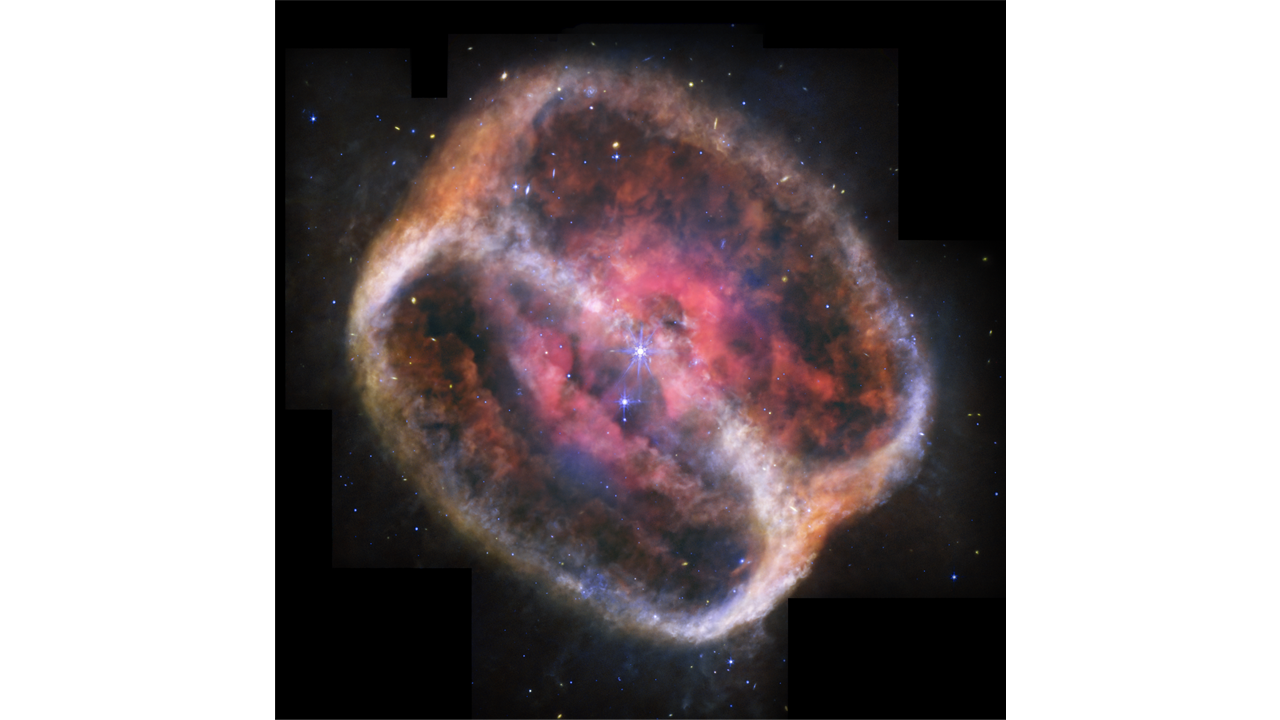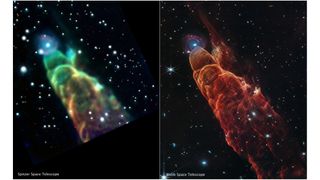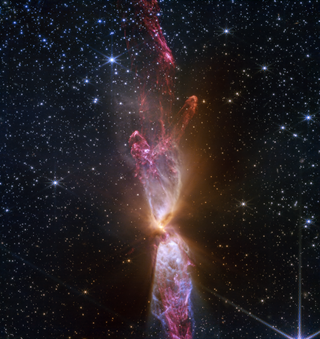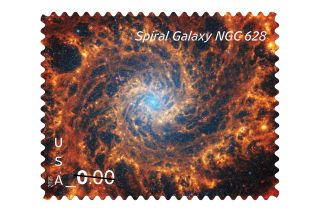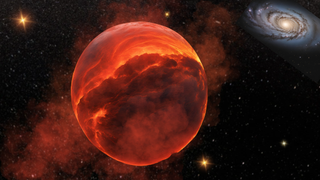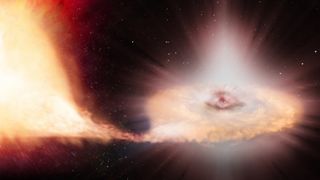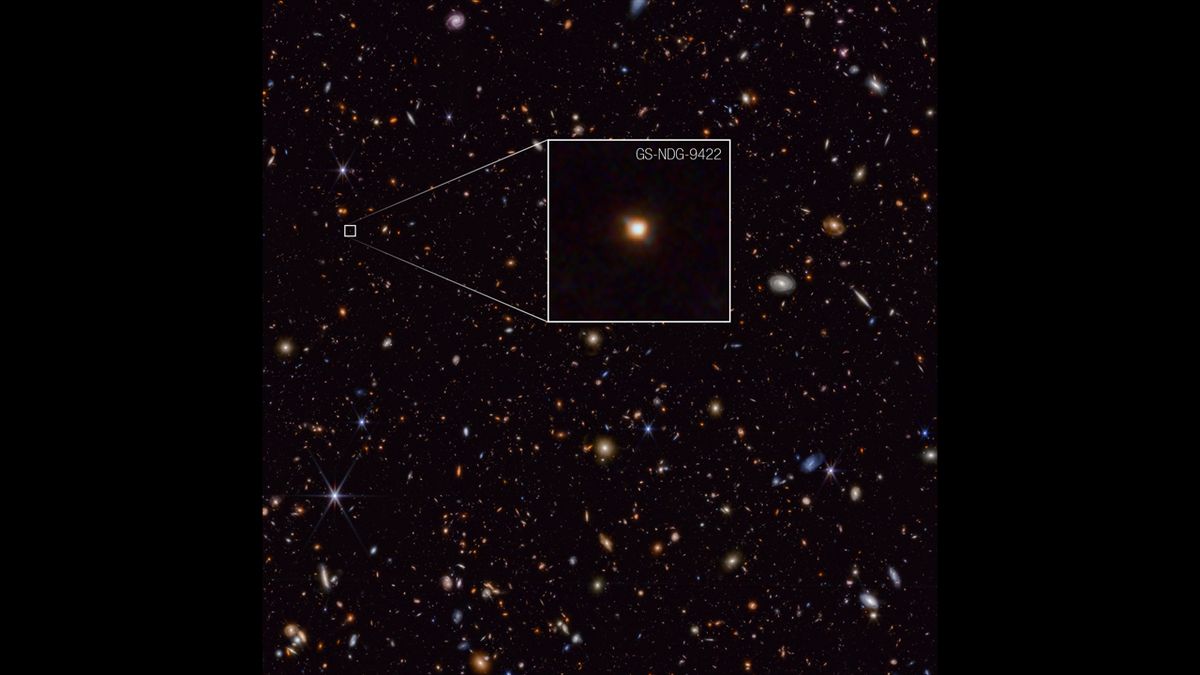Astronomers using the James Webb Space Telescope (JWST) have detected the first planet seen orbiting a dead star, offering new insights into how planets evolve during the final stages of a star’s life. The James Webb Space Telescope‘s observations of the exoplanet, named WD 1856+534 b, also confirm it is the coldest exoplanet to date, which could pave the way for the first detailed atmospheric studies of gas giant exoplanets and help us contextualize our solar system on a cosmic scale. “We were all a bit surprised — and excited…
Read MoreTag: James Webb Space Telescope
Scientists use the JWST to study an extremely ancient galaxy piercing through the Cosmic Dark Ages
Astronomers have caught an immensely ancient galaxy piercing the veil of darkness that shrouded the early universe. It’s surprising any light from distant galaxy JADES-GS-Z13-1-LA reached Earth at all. Photons coming from the realm that recently landed on the James Webb Space Telescope‘s mirrors existed when the universe was just 330 million years old — and, at that point in its adolescence, the universe was foggy and dim. A dense haze of gas suffused the space between stars, and even between galaxies, absorbing starlight and muffling the whole universe in…
Read MoreJames Webb Space Telescope sees a celestial Venn diagram around a dying star
A stunning new image from the James Webb Space Telescope (JWST) is allowing astronomers to examine the complex and turbulent final stages of a dying star’s life. The snapshot above showcases NGC 1514, a planetary nebula that resides roughly 1,500 light-years from Earth in the constellation Taurus. Despite the term, however, NGC 1514 has nothing to do with planets. Instead, at its heart, there are two stars. These stars appear as a single point of light in the James Webb Space Telescope‘s view, and this point of light is encircled…
Read More‘Cosmic tornado’ swirls in breathtaking new James Webb Space Telescope image
A cosmic coincidence has led to one of the most amazing images ever captured by NASA’s James Webb Space Telescope (JWST). The dramatic outflow from a newborn star, known as Herbig-Haro 49/50 (HH 49/50), just so happened to align perfectly with a distant spiral galaxy, creating this mesmerizing celestial scene. Herbig-Haro objects are glowing clouds of gas and dust shaped by newborn stars or protostars. They form when jets of charged particles, ejected from young stars at immense speeds, slam into surrounding material, creating brilliant, ever-changing patterns in the sky.…
Read MoreThis butterfly-shaped nebula owes its structure to 2 chaotic young stars
A huge bipolar outflow of gas and dust, grown from the tumultuous birth of a double-star system, has formed a cosmic hourglass — and the James Webb Space Telescope imaged the scene in splendiferous detail. Referred to as Lynds 483, or LBN 483,, this nebulous outflow is located about 650 light years away. It provides an ideal opportunity for the James Webb Space Telescope to learn more about the process of star formation. (Beverly Lynds was an astronomer who catalogued both bright nebulas – BN – and dark nebulas –…
Read MoreCenturies-old supernova guides James Webb Space Telescope through an interstellar gap
The spaces between stars in our galaxy are enigmatic realms filled with vast, diffuse clouds of gas and dust. These clouds tend to remain invisible — but the James Webb Space Telescope (JWST) has managed to capture one in a rare moment when it was lit up. Peering at a dusty pocket of our galaxy about 11,000 light-years away in the constellation Cassiopeia, the James Webb Space Telescope’s powerful infrared eyes watched as light from a centuries-old supernova illuminated interstellar material, warming it and causing it to glow. “This is…
Read MoreWebb mail: US Priority Mail stamps to again star deep space images in 2025
The universe of United States postage stamps featuring James Webb Space Telescope (JWST) imagery is set to expand again in 2025. The U.S. Postal Service (USPS) on Monday (Dec. 16) revealed that its upcoming Priority Mail and Priority Mail Express flat rate stamps will feature two deep space vistas captured by the Webb observatory. Scheduled for release on Jan. 21, the stamps will be the second set to use JWST photos after the pair issued this year. “USPS celebrates the continued exploration of deep space with an extremely high-definition image…
Read MoreJames Webb Space Telescope finds 1st ‘failed star’ candidates beyond the Milky Way
At this point, astronomers are used to the James Webb Space Telescope pushing the boundaries of astronomy — so it is little surprise that the $10 billion telescope has surpassed itself again. The James Webb Space Telescope (JWST) — with a little help from the Hubble Space Telescope — may have found a family of so-called “failed star” brown dwarfs in the Milky Way’s satellite galaxy, the Small Magellanic Cloud (SMC). If this is the case, it will be the first time astronomers have spotted such bodies beyond the limits…
Read MoreJames Webb Space Telescope finds supernova ‘Hope’ that could finally resolve major astronomy debate
Using the James Webb Space Telescope, astronomers have captured a stunning image of a distant supernova in a galaxy that looks like it’s being stretched like warm taffy. However, the golden smear hiding this gravitationally lensed supernova, which has been nicknamed “supernova Hope,” isn’t just remarkable for its aesthetic value. The supernova, which exploded when the 13.8-billion-year-old universe was just around 3.5 billion years old, tells us something about a huge problem in cosmology called the “Hubble tension.” The Hubble tension comes from the fact that scientists can’t agree on…
Read More‘That’s weird’: James Webb Space Telescope spies a strange galaxy outshining its stars
In a pocket of the universe teeming with galaxies, the James Webb Space Telescope has zeroed in on one blazing so brightly it outshines its stars. The James Webb Space Telescope has spotted the galaxy named GS-NDG-9422 — a realm that existed about one billion years after the Big Bang, and indeed one that may provide the missing link of galaxy evolution between the universe’s first stars and well-structured galaxies. GS-NDG-9422 “will help us understand how the cosmic story began,” Alex Cameron, an observational astronomer at the University of Oxford…
Read More
